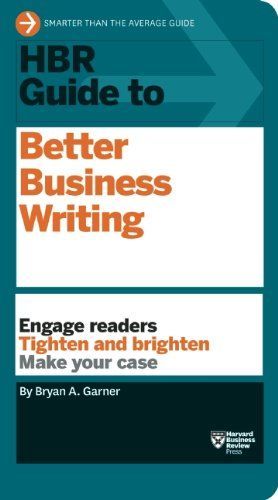
HBR Guide to Better Business Writing (HBR Guide Series)
DON'T LET YOUR WRITING HOLD YOU BACK. When you’re fumbling for words and pressed for time, you might be tempted to dismiss good business writing as a luxury. But it’s a skill you must cultivate to succeed: You’ll lose time, money, and influence if your e-mails, proposals, and other important documents fail to win people over. The HBR Guide to Better Business Writing, by writing expert Bryan A. Garner, gives you the tools you need to express your ideas clearly and persuasively so clients, colleagues, stakeholders, and partners will get behind them. This book will help you: • Push past writer’s block • Grab—and keep—readers’ attention • Earn credibility with tough audiences • Trim the fat from your writing • Strike the right tone • Brush up on grammar, punctuation, and usage
Reviews
matej yangwao@yangwao
Raf@raffaele
Andrea Badgley@andreabadgley
Lisa Charlotte Rost@lisa